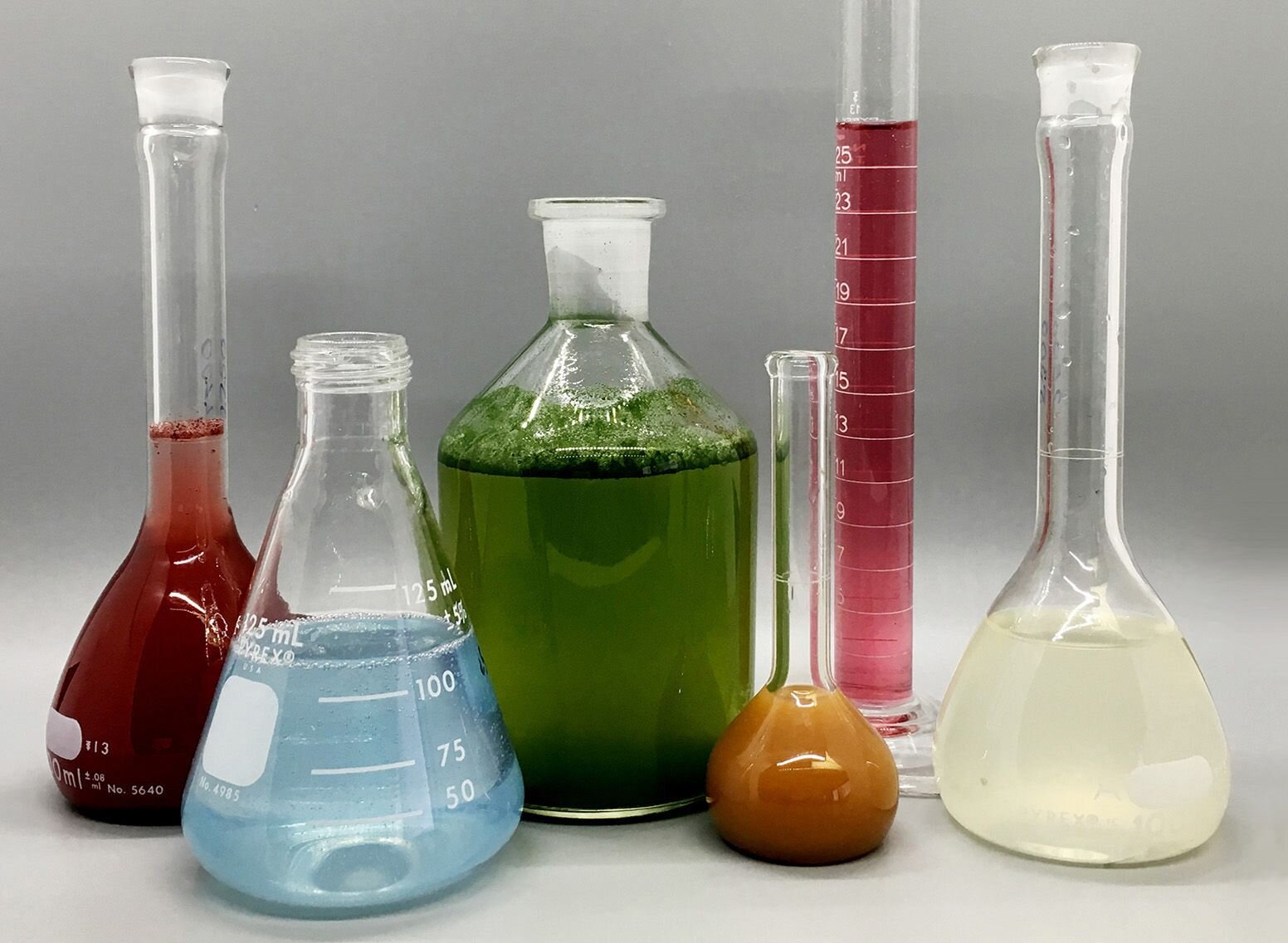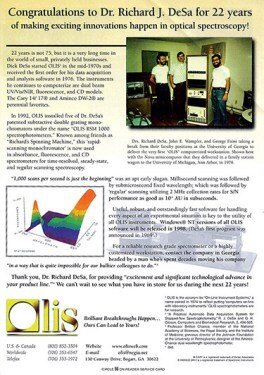Little Known Questions About Uv/vis.
Wiki Article
The Greatest Guide To Uv/vis
Table of Contents7 Simple Techniques For Uv/visHow Uv/vis/nir can Save You Time, Stress, and Money.About SpectrophotometersUv/vis Fundamentals ExplainedHow Uv/vis/nir can Save You Time, Stress, and Money.

Although spectrophotometry is most commonly applied to ultraviolet, noticeable, and infrared radiation, contemporary spectrophotometers can interrogate wide swaths of the electro-magnetic spectrum, consisting of x-ray, ultraviolet, noticeable, infrared, and/or microwave wavelengths. Spectrophotometry is a tool that hinges on the quantitative analysis of molecules depending upon how much light is soaked up by colored compounds.
The Single Strategy To Use For Uv/vis
A spectrophotometer is frequently used for the measurement of transmittance or reflectance of services, transparent or nontransparent solids, such as refined glass, or gases. Although lots of biochemicals are colored, as in, they take in visible light and therefore can be determined by colorimetric procedures, even colorless biochemicals can often be converted to colored substances suitable for chromogenic color-forming responses to yield compounds suitable for colorimetric analysis.: 65 However, they can likewise be developed to determine the diffusivity on any of the listed light varieties that typically cover around 2002500 nm using different controls and calibrations.An example of an experiment in which spectrophotometry is used is the decision of the stability constant of a service. A certain chain reaction within a solution might happen in a forward and reverse instructions, where reactants form products and items break down into reactants. Eventually, this chain reaction will reach a point of balance called an equilibrium point.
The Basic Principles Of Circularly Polarized Luminescence
The quantity of light that travels through the solution is indicative of the concentration of specific chemicals that do not enable light to go through. The absorption of light is because of the interaction of light with the electronic and vibrational modes of particles. Each kind of particle has an individual set of energy levels connected with the makeup of its chemical bonds and nuclei and thus will take in light of particular wavelengths, or energies, leading to distinct spectral properties.
They are extensively utilized in lots of markets including semiconductors, laser and optical manufacturing, printing and forensic examination, as well as in laboratories for the study of chemical compounds. Spectrophotometry is often used in measurements of enzyme activities, decisions of protein concentrations, determinations of enzymatic kinetic constants, and measurements of ligand binding reactions.: 65 Ultimately, a spectrophotometer is able to determine, depending on the control or calibration, what substances are present in a target and precisely how much through estimations of observed go to website wavelengths.
Created by Arnold O. Beckman in 1940 [], the spectrophotometer was developed with the help of his associates at his company National Technical Laboratories founded in 1935 which would end up being Beckman Instrument Business and eventually Beckman Coulter. This would come as a solution to the formerly created spectrophotometers which were unable to soak up the ultraviolet correctly.
How Circularly Polarized Luminescence can Save You Time, Stress, and Money.
It would be discovered that this did not provide satisfactory results, for that reason in Design B, there was a shift from a glass to a quartz prism which enabled better absorbance outcomes - circular dichroism (https://pblc.me/pub/3fc0b3e264b77b). From there, Design C was born with a modification to the wavelength resolution which wound up having 3 systems of it producedIt was produced from 1941 to 1976 where the price for it in 1941 was US$723 (far-UV accessories were a choice at extra cost). In the words of Nobel chemistry laureate Bruce Merrifield, it was "most likely the most essential instrument ever established towards the improvement of bioscience." Once it became stopped in 1976, Hewlett-Packard created the very first commercially offered diode-array spectrophotometer in 1979 known as the HP 8450A. It irradiates the sample with polychromatic light which the sample soaks up depending upon its residential or commercial properties. Then it is sent back by grating the photodiode variety which detects the wavelength region of the spectrum. Considering that then, the creation and application of spectrophotometry devices has actually increased profoundly and has actually turned into one of the most ingenious instruments of our time.

Things about Spectrophotometers
The grating can either be movable or repaired.In such systems, the grating is fixed and the intensity of each wavelength of light is determined by a various detector in the range. Additionally, most contemporary mid-infrared spectrophotometers use a Fourier change method to acquire the spectral details - https://pagespeed.web.dev/analysis/https-olisclarity-com/ft59obxjpp?form_factor=mobile. This strategy is called Fourier transform infrared spectroscopy. When making transmission measurements, the spectrophotometer quantitatively compares the portion of light that goes through a reference service and a test option, then digitally compares the intensities of the 2 signals and calculates the portion of transmission of the sample compared to the referral standard.

Report this wiki page